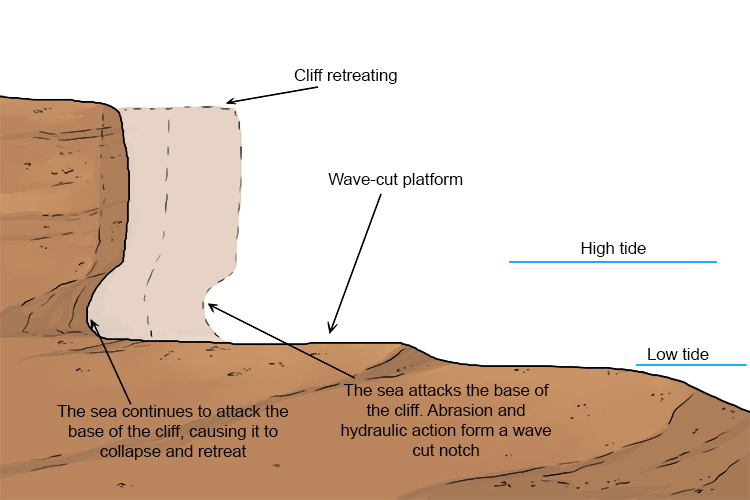
WaveCut Platform Geography Mammoth Memory Geography
This wave-cut notch will become larger leaving the cliff above it unsupported. Eventually the wave-cut notch becomes so large that the overhanging cliff collapses due to gravity - the cliff above will have already be weakened by processes of weathering. Hydraulic action, abrasion and freeze-thaw weathering will repeat the process of wave-cut.

Wavecut platform Marine Erosion, Sea Cliffs & Shorelines Britannica
The process of cliff retreat is enhanced in a wetter climate and is retarded in more arid regions. The wave-cut platform is a horizontal to low-angle seaward-dipping surface that occurs between mean high watermark and wave base. The wave-cut platform may be covered in a thin veneer of reworked sediment or may be bare.
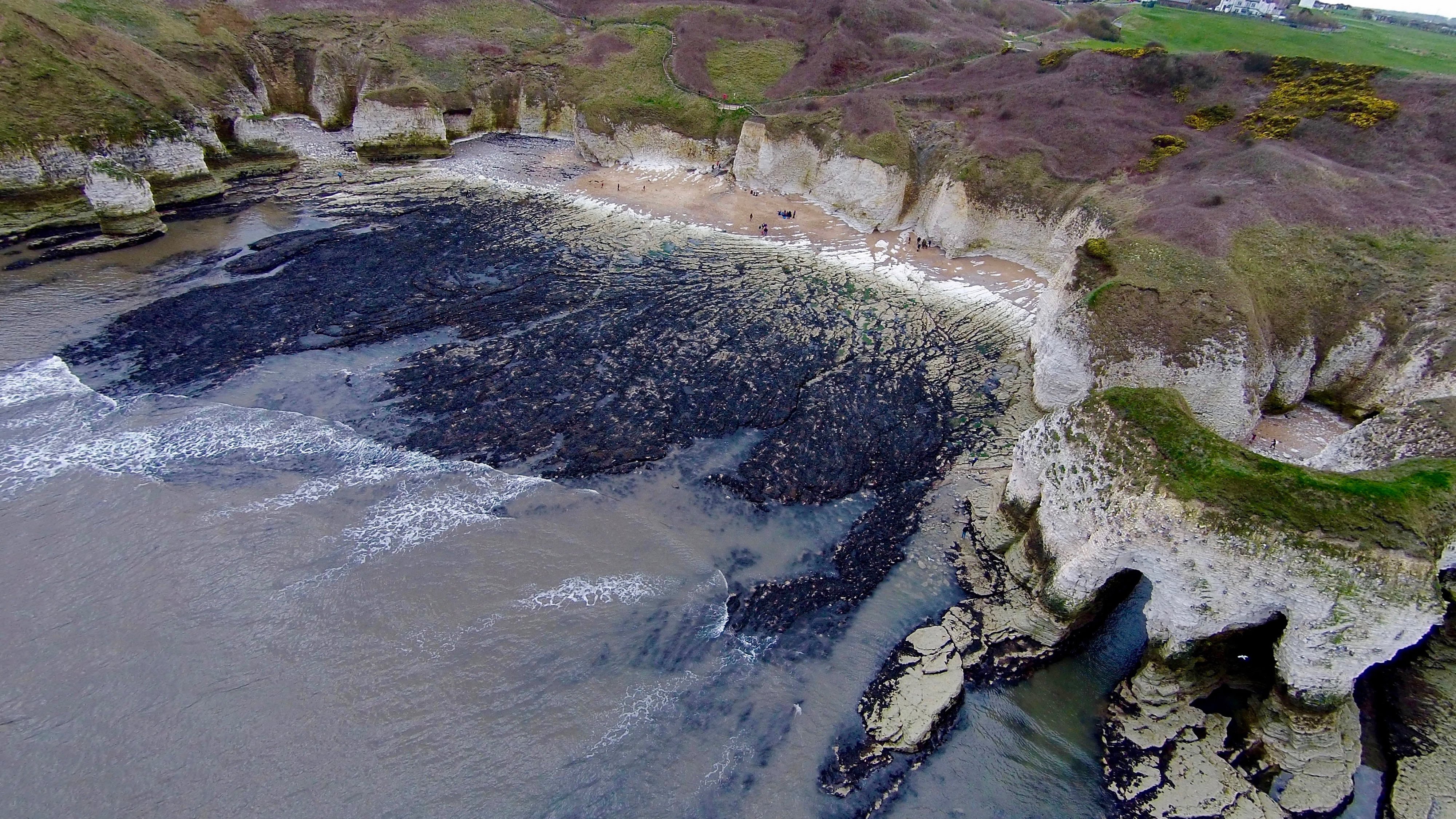
Wavecut platform at Flamborough Geography
Wave erosion undercuts steep shorelines creating coastal cliffs. A sea cliff is a vertical precipice created by waves crashing directly on a steeply inclined slope. Hydraulic action, abrasion, and chemical solution all work to cut a notch at the high water level near the base of the cliff.
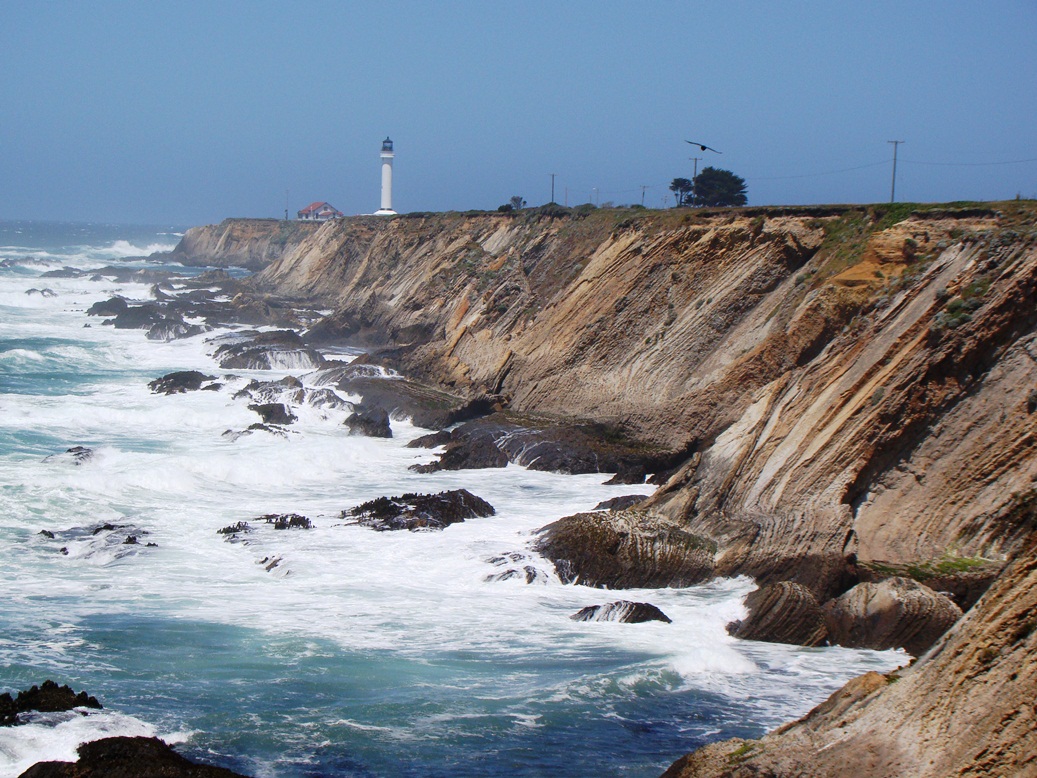
COLOR KEY WaveCut Cliffs Blue WaveCut Platforms Red S...
A wave-cut platform is a wide, gently sloping surface found at the cliff's base and extends into the sea. The image below shows a wave-cut platform formed at Flamborough, Holderness Coast. A wave-cut platform is formed when: The sea attacks a weakness in the base of the cliff. For example, this could be a joint in chalk.
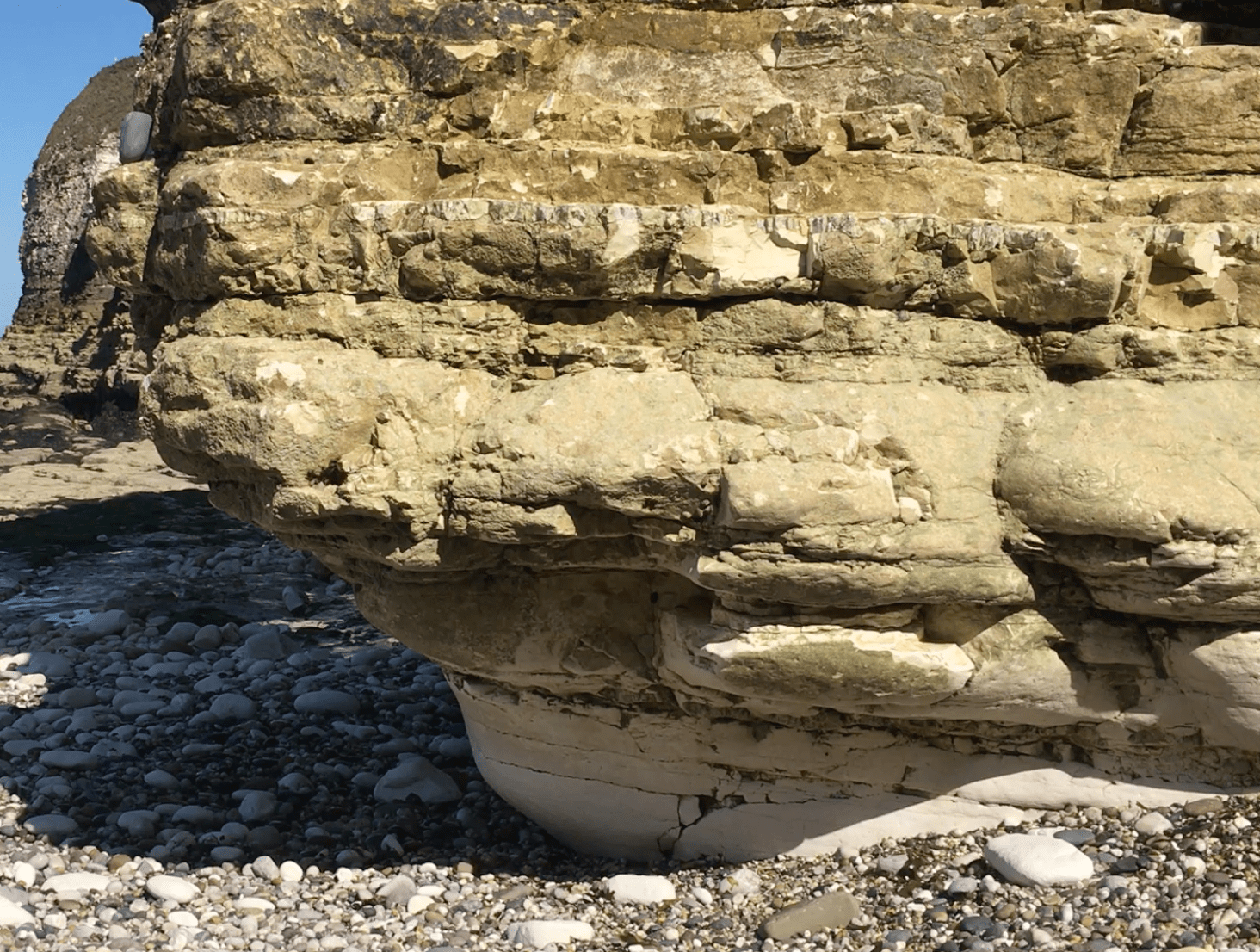
Cliffs and wavecut platforms Geography
Sea cliffs The most widespread landforms of erosional coasts are sea cliffs. These very steep to vertical bedrock cliffs range from only a few metres high to hundreds of metres above sea level. Their vertical nature is the result of wave-induced erosion near sea level and the subsequent collapse of rocks at higher elevation.

Wave cut cliffs result from the cutting action of the sur...
Wave-Cut Cliff Want to know what a wave-cut platform is? Before moving to the definition of wave-cut platform we need to first know about its different names. Wave-cut platforms are known in different terms like a wave-cut cliff, coastal bench and also as shore platforms.

Wave Cut Notch The Geography Site
. Erosional features such as wave-cut platforms and cliffs can be found on headlands, since they are more open to the waves. Bays are more sheltered with constructive waves which deposit.
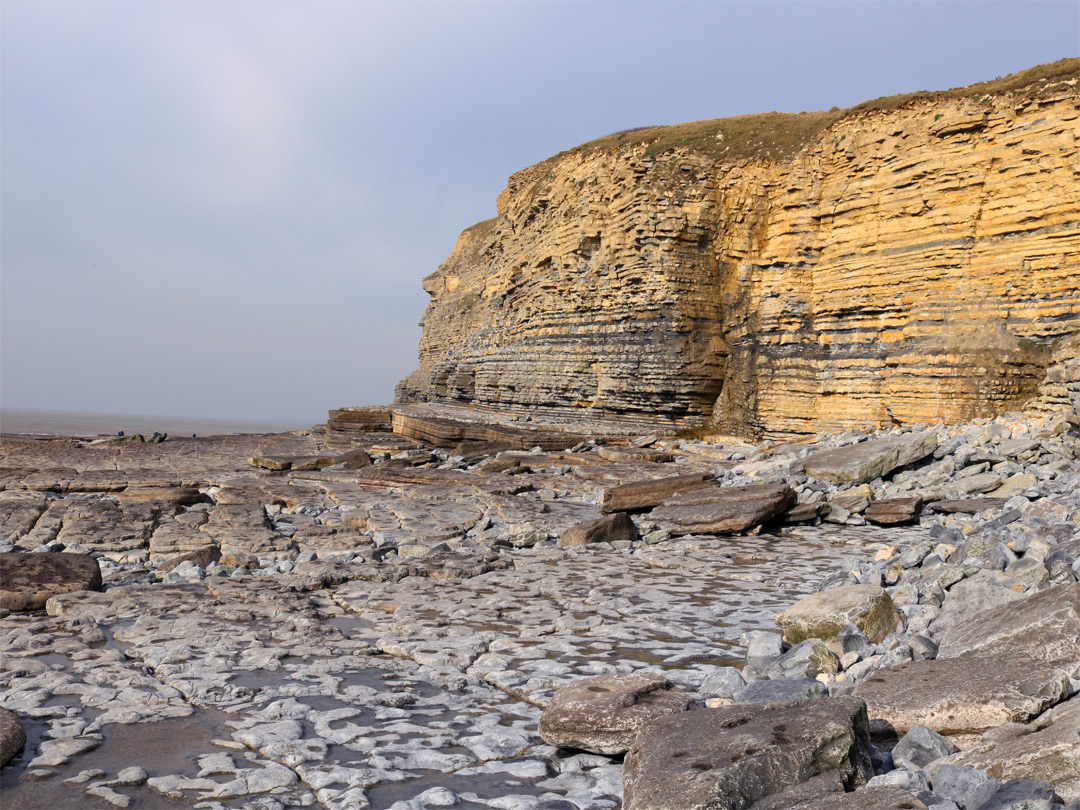
Photographs of Dunraven Bay, Vale of Wales Wavecut terrace
Wave-cut cliffs form where waves cut into the bottom part of the cliff, eroding away the soil and rocks there. First the waves cut a notch into the base of the cliff. If enough material is cut away, the cliff above can collapse into the water. Many years of this type of erosion can form a wave-cut platform (Figure 10.16).
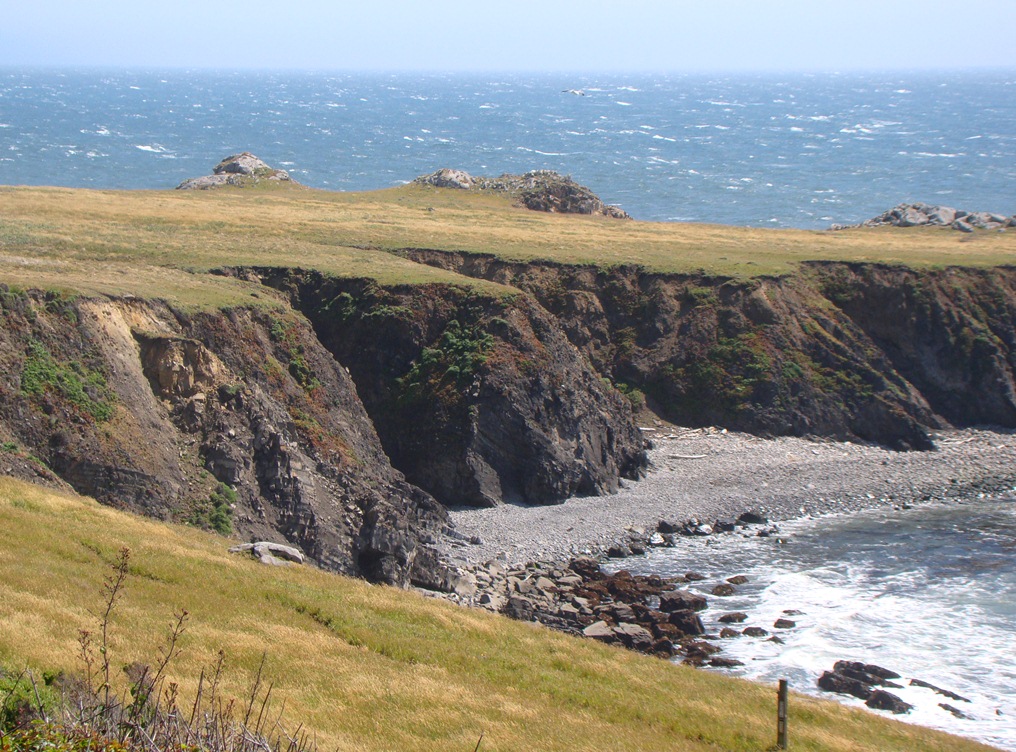
Wavecut terrace and former sea stacks near Stewarts Point, Highway 1, California
A wave-cut platform, shore platform, coastal bench, or wave-cut cliff is the narrow flat area often found at the base of a sea cliff or along the shoreline of a lake, bay, or sea that was created by erosion. Wave-cut platforms are often most obvious at low tide when they become visible as huge areas of flat rock.
Wavecut platform, and chalk cliffs, Stock Photo
The next stages of this process would be the continued landward erosion of the sea cliffs and the complete erosion of the stacks and wave-cut platforms in favour of a continuous and nearly straight sandy beach. Figure 17.15 Evolution of a straightened coast through the erosion to stacks and arches, sea cliffs, and wave-cut platforms [SE]

Wave Erosion
Introduction Ocean water is constantly in motion: north-south, east-west, alongshore, and vertically. Seawater motions are the result of waves, tides, and currents ( Figure below). Ocean movements are the consequence of many separate factors: wind, tides, Coriolis effect, water density differences, and the shape of the ocean basins.
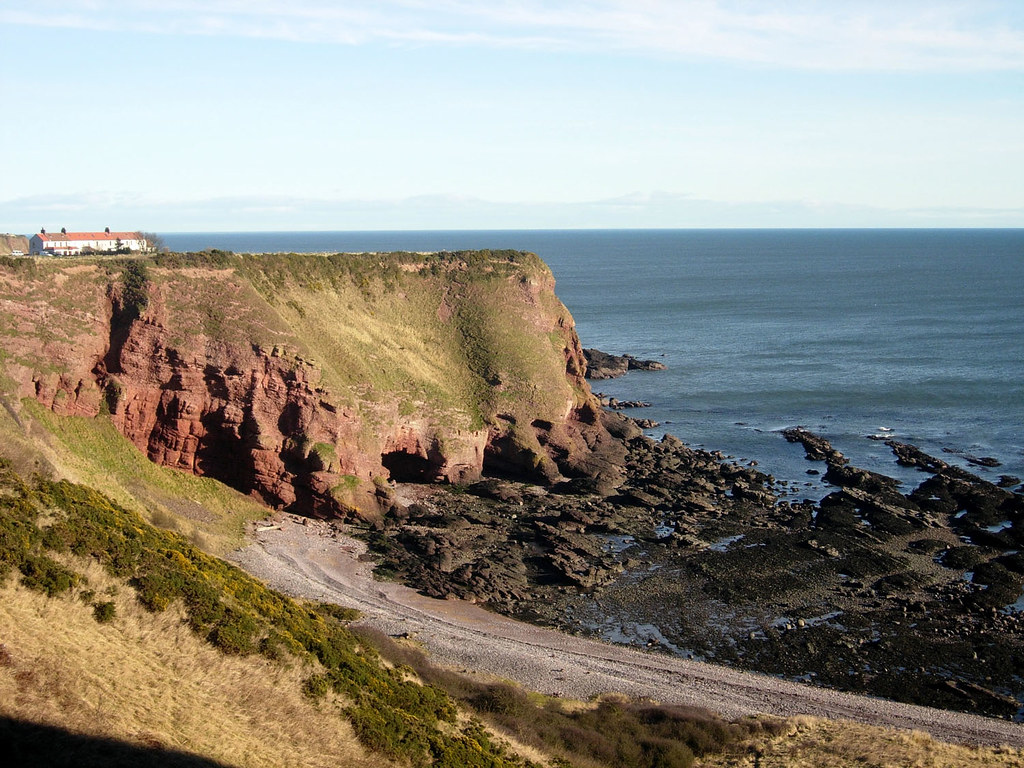
Wave cut platform, cliffs and caves SAGT Flickr
A wave-cut close wave cut platform An erosion feature that is left behind as a cliff is eroded backwards over time. platform is the bedrock that is left behind as the cliff moves backwards.
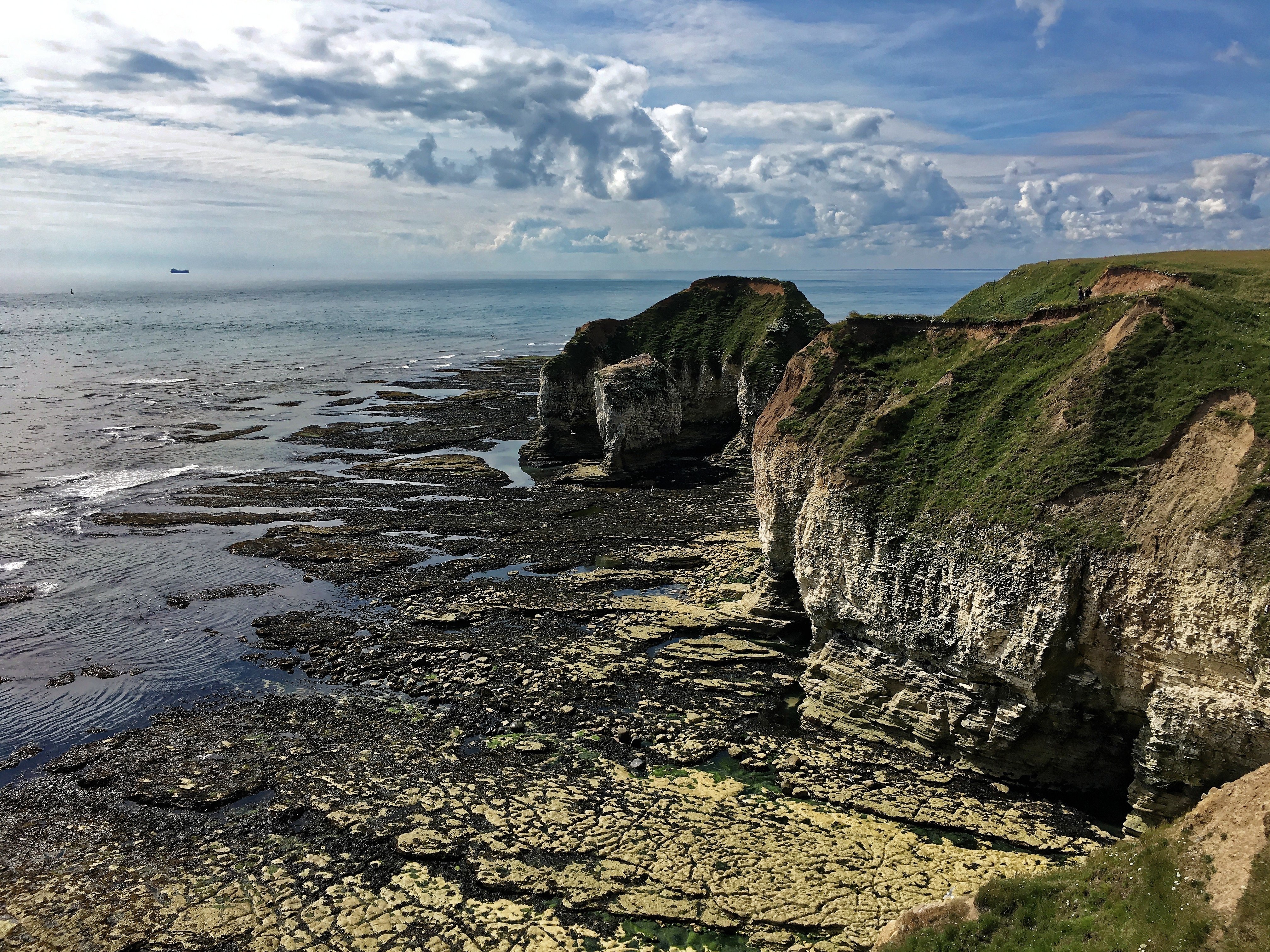
Cliffs and wavecut platforms Geography
Areas that stick out into the water are eroded by the strong wave energy that concentrates its power on the wave-cut cliff. A wave-cut platform is the level area formed by wave erosion as the waves undercut a cliff. An arch is produced when waves erode through a cliff.
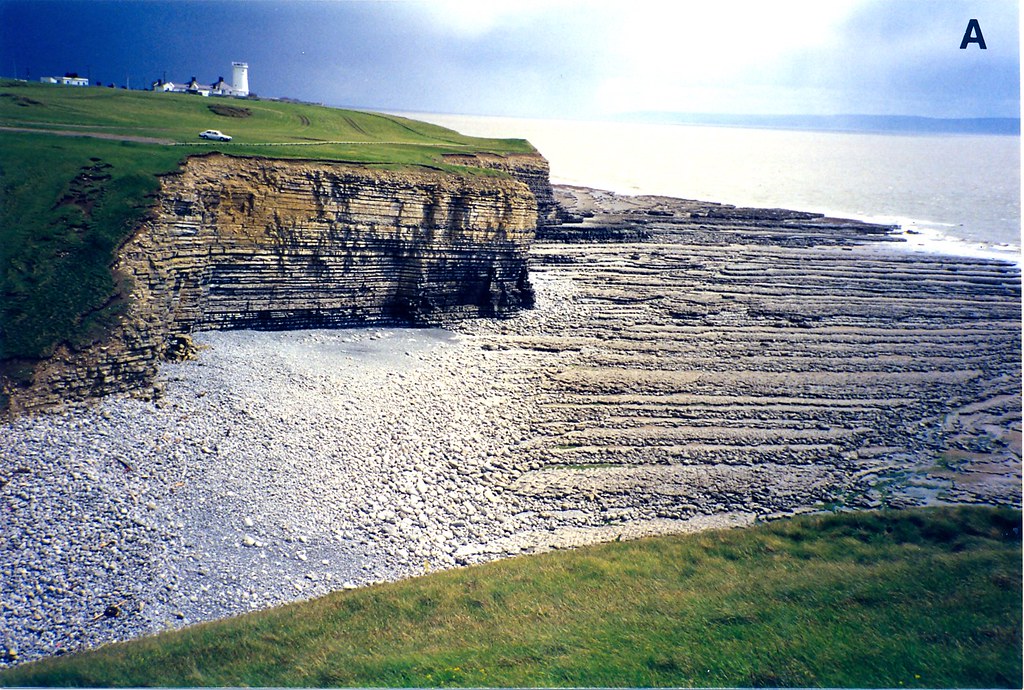
Shore (wavecut) platform and cliffs (Nash Point, Flickr
Landforms From Wave Erosion. Erosion by waves can create unique landforms (Figure below).Wave-cut cliffs form when waves erode a rocky shoreline. They create a vertical wall of exposed rock layers. Wave-cut platforms are level areas formed by wave erosion. Since these platforms are above sea level, it means that either sea level was higher relative or the rock was lower.

Cliffs and wavecut platforms Geography
A cliffed coast, also called an abrasion coast, is a form of coast where the action of marine waves has formed steep cliffs that may or may not be precipitous. It contrasts with a flat or alluvial coast . Formation Crags on the southwestern coast of Portugal A cliffed coast in Sydney with houses and apartments Dingli Cliffs in Malta

Sea Levels Falling, with Ridd and Roberts Iowa Climate Science Education
A wave-cut bench is a flat bench-like platform of rock typically preserved in the upper surf zone associated with an actively eroding sea cliff on an emergent coastline (Figures 12-14 and 12-17, also see marine terraces below). Figure 12.13. Sea cliff rise above the wave-cut platform (with beach) at Del Mar Dog Beach, CA. Figure 12.14.